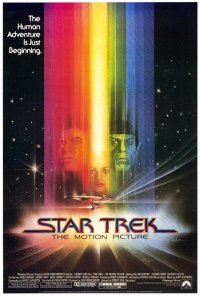Dochterman: Through the years as I realized the trials and troubles that went into getting the film into theaters the first time, I began to see the flaws in it… very distinct ones. The slight clunky feel to some of the cuts… and especially on certain sections of visual effects, that I learned later were just delivered from the FX house and spliced in… sight unseen. The entire third act does seem to be a little disjointed at times, with dialog repeating over and over again in different ways what we as an audience are supposed to know to convey the plot progression. Some heavy handed-ness in explaining things by the characters… which, thankfully, have been rectified in The Director’s Edition cut years later. I know a lot of audience members bemoan the supposed “slowness” of the film… but frankly, I never saw it that way… It meant to me that the actions in the film seemed more “real”… and that space seemed more vast, and the difficulties of mankind existing in space became more of a threat. I always considered the pacing to be more “deliberate” and gave more weight to the events that were happening.
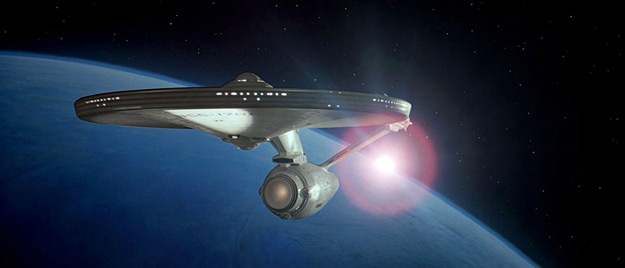
Fein: Star Trek: The Motion Picture was a remarkable accomplishment given the challenges it faced. The film is epic yet intimate. Unlike any of the films that followed, the film has a prestigious class in its presentation. From the overture to the grand scale shots of V’Ger, the film was designed as an event. The film—not unlike Jerry Goldsmith’s score—is a symphony of eye candy, but the script and flow of the film was unbalanced. There were production difficulties that caused problems during the production, from story conflicts between Gene Roddenberry and Harold Livingston, to technical and creative problems with the visual effects. The film was flawed but nonetheless breathtaking visually and a celebration of the series reborn. It wasn’t until The Director’s Edition that the film received a much needed fine cut and additional visual effects to smooth out and complete the film. The original version worked; it just was not nearly the polished film it was intended to be.
Mantz: Pretty sure I answered this elsewhere!
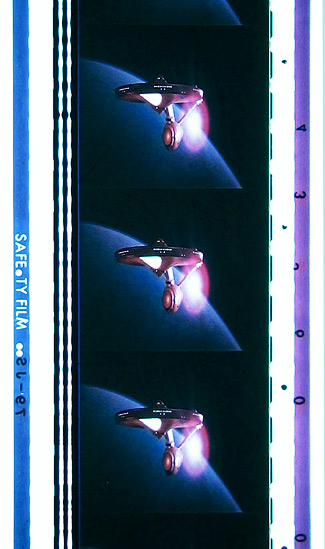 Matessino: Star Trek: The Motion Picture is truly a motion picture, despite the perversion of that title that naysayers like to bandy about. It is a movie that is designed for the big screen and a lot of people who find it boring have probably only seen it on a television… and you find the same comments about 2001. Thanks to the extraordinary production design and visual effects you really feel like you are seeing Earth’s future and the Enterprise feels like a real, very complex piece of technology. Robert Wise sensed this and directed the movie to take advantage of all that. It has a tremendous scope, yet there is still a very personal story there about how we interact with technology and with each other. Within the Star Trek continuity, this is actually the most important Spock story of all. It’s in this movie that Spock comes to realize that his human half is something that is an indispensable part of him and that on the Enterprise he finds a true sense of belonging. The journey of this character over the course of the movies that follow has far more resonance when they are viewed in the context of TMP. The only flaws and disappointments to me are that there needed to be more time spent on the script and in post-production. Despite the fact that the original story began life as a pilot for an aborted second TV series, I think that it was a great concept for a Star Trek feature that, unfortunately, suffered from the realities of the business in which it was being attempted.
Matessino: Star Trek: The Motion Picture is truly a motion picture, despite the perversion of that title that naysayers like to bandy about. It is a movie that is designed for the big screen and a lot of people who find it boring have probably only seen it on a television… and you find the same comments about 2001. Thanks to the extraordinary production design and visual effects you really feel like you are seeing Earth’s future and the Enterprise feels like a real, very complex piece of technology. Robert Wise sensed this and directed the movie to take advantage of all that. It has a tremendous scope, yet there is still a very personal story there about how we interact with technology and with each other. Within the Star Trek continuity, this is actually the most important Spock story of all. It’s in this movie that Spock comes to realize that his human half is something that is an indispensable part of him and that on the Enterprise he finds a true sense of belonging. The journey of this character over the course of the movies that follow has far more resonance when they are viewed in the context of TMP. The only flaws and disappointments to me are that there needed to be more time spent on the script and in post-production. Despite the fact that the original story began life as a pilot for an aborted second TV series, I think that it was a great concept for a Star Trek feature that, unfortunately, suffered from the realities of the business in which it was being attempted.
M. Okuda: Star Trek: The Motion Picture demonstrates that the tight budget, schedule, and technical constraints within which the original series was made were, in fact, an important part of the quality of the show. The brilliance of Gene Roddenberry and the original filmmakers in adapting to and overcoming those limitations resulted in a show that, for the most part, still holds up surprisingly well today. But Roddenberry, like all filmmakers, longed for the day in which he could finally get a “real” budget so that he could cut loose and put his “true vision,” or at least something closer to it, onto the screen. And to Roddenberry, the budget of a big movie must have seemed nearly unlimited. And while the visual achievements of Robert Wise, DP Richard Kline, production designer Harold Michelson, VFX supervisors Trumbull and Dykstra, and the entire team were stellar, the result was ultimately disappointing.
D. Okuda: To be fair, I think you have to remember that it had been ten years since Star Trek had gone off the air. Ten long years. Star Trek was not just a wonderful TV show, but to a lot of us, it had become something more. And during those ten years, our hopes and our expectations grew to the point where frankly, it was probably impossible to satisfy our wishes. I wanted them to recapture the sense of family, of this group of friends. I wanted it to look and sound and feel like the TV show I loved so much. But I also wanted them to push the boundaries, to show me a grand adventure, to give me Gene Roddenberry’s version of 2001. They really tried, but in the end, I wonder if anything could have satisfied completely.
 Coate: Which cut of Star Trek: The Motion Picture do you like best?
Coate: Which cut of Star Trek: The Motion Picture do you like best?
Altman: I remember at conventions in the early 80s, there was a petition going around in a desperate attempt to get Paramount to re-release a new version of the film in a 70mm version. That never happened, but what did miraculously occur was the later VHS release and the ABC television airing both restored footage that was cut from the film which helped the story enormously. Certainly, The Director’s Edition is a terrific addition to the canon as well and was a true labor of love from those involved with some remarkable visual effects that honor the original intentions of the filmmakers. My favorite version of ST:TMP probably only exists in my mind, however. It’s a synthesis of all these versions and, of course, scenes never filmed; the confrontation in Admiral Nogura’s office, the revelation that the girl killed in the transporter was Antoinette, the love of Kirk’s life and Nogura’s aide. There’s also the nutty 70s New Age humanism of Gene Roddenberry that he layered into the novelization like New Humans and a sexual freedom in the 23rd Century that made free love in the 60s look like the Puritans. You gotta love Roddenberry. Plus the communicator that was hard-wired into your brain. Good thing, Steve Jobs didn’t get a crack at that one.
Bond: I really do like the director’s cut, which fixes a number of problems in special effects and other areas. It was a real labor of love and an amazing opportunity, because the original film was truly an unfinished work because of the way it was forced to meet that December 7th release date. I still feel like it could have been cut down even further for pacing, but the problem with doing that is you would almost have to have an entirely new score written. The one great thing that came out of the original pacing of the film, and the fact that entire visual effects shots were placed into that film almost unedited, is that you gave Jerry Goldsmith this incredible canvas to write what is truly a fully developed piece of music worthy of the concert hall. TMP is always compared to Kubrick’s 2001 in terms of that very deliberate pacing that is associated with something more intellectual, but in Kubrick’s case he really made an art film that is often an abstract experience that sort of forces you out of yourself as a viewer, whereas with Star Trek, there are some big ideas there, but you’re still interpreting that through these familiar TV characters that could not really transcend themselves because they had to be around next week, or for the next film. That’s why everything that happens in the movie happens to Ilia and Decker, who are characters we’re not invested in or interested in. Kirk and McCoy are really bystanders and Spock does go through something, but Nimoy deliberately plays him as impenetrable because he’s supposed to be trying to divorce himself from emotions once and for all, and that makes him very remote in a way he wasn’t on the TV series. It works for that specific story but it also makes Spock kind of unpleasant to watch and be around, and Kirk is also very stiffly interpreted by Shatner, who was always so relaxed and confident on the TV show. So you don’t really feel like you’re with the same people, but at the same time their familiarity prevents them from really being part of this story which is about humanity evolving into something else. Kirk, Spock and McCoy can’t truly evolve—at least not to the point this story requires them to.
Bulk: I prefer The Director’s Edition. When put up against the theatrical cut and the “Special Longer Version” there is no comparison. In the interests of full disclosure, I’ll mention that I’m friends with Mike Matessino (Restoration Supervisor), David C. Fein (Producer) and Daren R. Dochterman (Visual Effects Supervisor). Regardless of these relationships, The Director’s Edition finally feels like a completed project, with a tighter edit, a polished sound mix, and finished effects. These are things the theatrical version was denied because of the locked in December 7 release date. That was the goal of the project and it succeeded. It’s the version I go to when I watch the movie. I’m hopeful that at some point it will be released in HD.
Burnett: Absolutely The Director’s Edition. No question...although the removal of Kirk’s second “Viewer off” during the V’Ger briefing on the rec deck remains an annoying misstep by the restoration team.
Dochterman: I am totally biased. I definitely prefer The Director’s Edition which I was a contributor to. I got to be part of the discussion with Robert Wise about what changes he wanted made, what trims he wanted, and what additions he intended. Some of the changes in the cut are extremely subtle… and some you don’t really notice at all, save for a change in your reactions to previously cold scenes. The theatrical cut is still enjoyable to me, and I’m glad it is still out there and available. The slightly dodgy “Special Longer Edition” that was first introduced on the television premiere, and then released on home video, and custom cut into the “Sit Long and Prosper” screenings in 1991, is an interesting thought experiment of how much footage can actually be packed into a film. But the inclusion of the unfinished “Kirk Spacesuit in Airlock” footage that were intended to be a completely different sequence just come off as a big mistake.
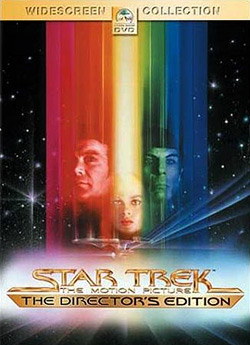 Fein: There is no question for me… The Director’s Edition of the film is the closest to the original goals for the film and is the way it should be experienced. Historically I see the value of the other versions, but as a film… this is the most compelling and entertaining version. It wasn’t until the final edit of The Director’s Edition that I felt that the character of Kirk was truly in character. The other versions—the theatrical release and the televised “Special Longer Version”—will forever exist for me as memories of the experience I had watching them, but the film that audiences for generations will enjoy most is clearly The Director’s Edition.
Fein: There is no question for me… The Director’s Edition of the film is the closest to the original goals for the film and is the way it should be experienced. Historically I see the value of the other versions, but as a film… this is the most compelling and entertaining version. It wasn’t until the final edit of The Director’s Edition that I felt that the character of Kirk was truly in character. The other versions—the theatrical release and the televised “Special Longer Version”—will forever exist for me as memories of the experience I had watching them, but the film that audiences for generations will enjoy most is clearly The Director’s Edition.
Mantz: I like the director’s cut, in which some slight cuts were made to make Kirk a little more likeable. I also loved hearing the bridge sounds that we’re used in The Original Series (it still sounds cool!).
Matessino: Obviously I’m partial to The Director’s Edition because I worked with Bob Wise on creating it. But I acknowledge the historical importance of the original theatrical version as well as the “Special Longer Version.” I think it says something about the movie that when the added scenes aired on the ABC network, viewer response was so strong that Paramount put the extended version out on home video. But especially seen in light of the movies and series that followed, I can’t help seeing the theatrical version the same way that Bob Wise did… as a first rough assembly with an unfinished sound mix, missing effects and lacking a finessed pace and focus. It was the experience of a lifetime to watch the picture with him and hear him explain how just making a small and seemingly unimportant editorial adjustment can bring a scene into focus. He knew that the script for TMP could have been better but by revisiting the film and without changing too much he figured out a way to implement small tweaks to give it more impact. The combination of completing effects as originally intended and giving the movie a proper tempo and sound mix made it into a truly finished picture, in my view. I feel that only in The Director’s Edition do we really get the focus on Decker and Ilia that we need as well as the sense of Kirk and Spock gradually realizing that they are best when they are at each other’s side on board the Enterprise. The Director’s Edition points the story toward these resolutions in a more focused and assured way.
M. Okuda: The Director’s Edition. It’s a better film in so many ways, and it better reflects the vision of the director.
D. Okuda: Still, we both have a certain fondness for the original theatrical release. When we see it, it throws us back to 1979, when that dream came true. And it makes us smile.
Coate: What is the legacy of Star Trek: The Motion Picture?
Altman: Star Trek’s legacy loomed large. They made a movie that most people consider horrible; overbaked, slow, wooden and silly. And it went wildly over budget. And it was still a huge hit. So as much as Star Wars paved a way for a succession of cheapie knock-offs from Message From Space to Battlestar Galactica (albeit not cheap), in a way Star Trek was perhaps even more influential in that it validated the franchise formula that only the James Bond films had really perfected. In the past TV shows turned movies were usually edited together versions of episodes or produced when the show was still on the air, like Adam West’s Batman. For Star Trek, it was ten years since the show was cancelled and yet a vociferous, but not particularly vast group of fans kept it alive and spawned a big budget feature. That feature grossed over a $100 million worldwide in 1980 and proved that Star Trek was a viable franchise. Without Star Trek: The Motion Picture, there would have been no Star Trek II, III, IV, V or bloody VI. No whales. And No God. And it is unlikely there would have ever had been a Next Generation or Deep Space Nine. We can also blame it for Voyager and Enterprise. And the idea of resurrecting a cancelled TV series as a movie or reboot probably would have never been born without Star Trek: The Motion Picture’s success. We can blame it for that too.
Bond: Mike, I think I probably answered this several times!
Bulk: Everything that has happened to Star Trek after this movie is a direct result of this movie. I remember a small item in Video Review magazine in the 80s announcing The Next Generation. It used a publicity still from TMP and had the headline, “Finally, a TV Show, Inspired by the Movie, Inspired by a TV Show.” That sums it up, doesn’t it? TMP confirmed with Paramount that there was an active interest in this franchise and that led to the sequels, which led to multiple television series. And last month Paramount announced a director and a release date for the next Star Trek motion picture. The human adventure is just beginning!
Burnett: The legacy of TMP is the continued and ongoing success of the Star Trek franchise, thirty-five years later and well into the 21st Century. Eleven additional feature films with another on the way, countless novels and comic books, endless toys, and, most importantly, four additional television series, with hundreds of hours of new Trek adventures, additional history and many, many new characters.
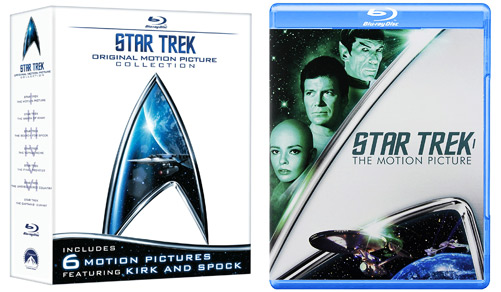
Dochterman: Over the years, and with the introduction of The Director’s Edition thirteen years ago, the legacy of TMP has been, wonderfully, resuscitated. I remember back then that the reactions to TMP were generally negative from the younger crowd… one used to the more fast paced and basic good vs. evil stories of the later installments. Now, either due to their exposure to the more textural Director’s Edition, or to their own tastes changing and evolving, the reaction to TMP is much more positive. More and more people seem to be coming to respect the scope and beauty of the first Star Trek film. I hope this continues, as TMP remains an important part of my fandom and my professional life.
Fein: Star Trek: The Motion Picture was one of the last films of Director Robert Wise. His career was remarkable (The Day the Earth Stood Still, West Side Story, The Sound of Music), and he was a director whom Gene Roddenberry respected and trusted enough to translate Star Trek to the big screen. Star Trek: The Motion Picture didn’t have an easy birth, but the results of its creation had a ripple effect that defined the direction and future of the Star Trek franchise. I know that Bob believed, and took great pride in the knowledge that his films live on for generations of new audiences to appreciate. As for Star Trek? The film surely benefitted from the success of Star Wars, but was different, and in many ways humbling. And it had an empowering message about the human experience, a message that Gene Roddenberry always inspired in his work. I’ve always felt that tag line for the film truly defined it and its legacy well… there is no comparison.
Matessino: I’ve already mentioned the movie’s place within the Star Trek franchise and the cinematic scope of the picture, so now I’ll elaborate on what I alluded to earlier when I said that the movie has more relevance now than ever. This became shockingly apparent when I viewed the film with an audience a few years ago at an event marking the release of a 3-CD release of Jerry Goldsmith’s amazing music score for the movie. The movie is all about how technology gets in the way of people truly interacting with each other, and I feel that this is a real issue in today’s society that wouldn’t have occurred to us in 1979. The Enterprise is a technological marvel that goes out into space to confront a machine intelligence that has amassed “all that is learnable” about the universe… yet it is still wondering about the meaning of its own existence. This is reflected in the crew of the Enterprise… they are so focused on getting their technology to work that they have forgotten how to interact with each other. If we think about that in terms of our culture today, we can all relate, can’t we? It’s almost like we’re being conditioned to think that we have a fulfilling life if we have all the latest gadgets, have enough Facebook friends, enough Twitter followers, post enough photos to Instagram, and all with the fastest connection money can buy. V’Ger did the same thing… digitized everything it encountered, amassing so much information that it needed a vessel hundreds of times larger than the Enterprise to store it all… only to discover that the only idea in the universe that seems truly fulfilling is to physically connect with someone. Somehow Gene Roddenberry saw this coming. Now, even thirty-five years after the release of Star Trek: The Motion Picture, we need to listen all over again. That’s one hell of a legacy.
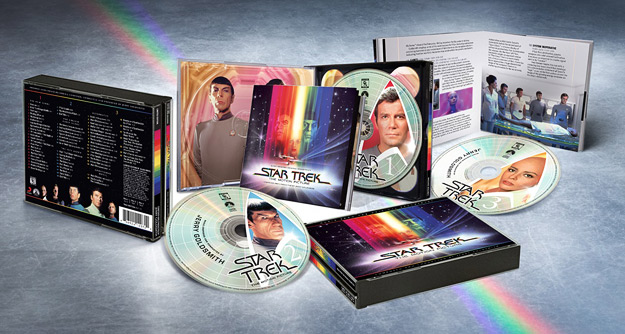
M. Okuda: Star Trek: The Motion Picture marked the graduation of Gene Roddenberry’s little TV show into the big time. It wasn’t just a quick rip-off of a popular TV show. It showed that you can do real science fiction in a popular film, that it can be thoughtful and character-based and that it didn’t have to be sterile special effects and explosions.
D. Okuda: Just as the original Star Trek inspired many of us, Star Trek: The Motion Picture showed that Gene Roddenberry’s vision can continue to delight, entertain, and inspire.
Coate: Thank you, everyone, for participating and for sharing your thoughts about Star Trek: The Motion Picture on the occasion of its 35th anniversary.
----
Special Thanks: Mark A. Altman, Jeff Bond, Neil S. Bulk, Robert Meyer Burnett, Daren R. Dochterman, David C. Fein, Bill Gabel, John Hazelton, Mark Lensenmayer, Scott Mantz, Mike Matessino, Denise Okuda, Michael Okuda.
- Michael Coate


